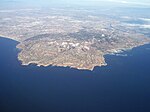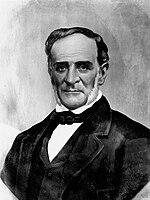Rolling Hills, California

Rolling Hills is a city on the Palos Verdes Peninsula, in Los Angeles County, California, United States. Rolling Hills is a gated community with private roads with three entry gates. Homes are single-story 19th century California ranch or Spanish haciendas exemplified by architect Wallace Neff. Incorporated in 1957, Rolling Hills maintains a rural and equestrian character, with no traffic lights, multi-acre lots with ample space between homes, and wide equestrian paths along streets and property lines.Rolling Hills has the third highest median house value in the United States. Homes are required to have white exterior paint. Homeowners are also required to maintain horse property on their lots, or at minimum keep land where stalls could be built. The community was developed by A. E. Hanson, who also developed Hidden Hills.Residents work, shop, attend school, and obtain other services in the other towns on the Palos Verdes Peninsula as the only commercially zoned land within the city is occupied by the Rolling Hills City Hall, Rolling Hills Community Association, and LA County Fire Department Station 56. As of the 2020 census, the city population was 1,739, down from 1,860 at the 2010 census.
Excerpt from the Wikipedia article Rolling Hills, California (License: CC BY-SA 3.0, Authors, Images).Rolling Hills, California
Reata Lane,
Geographical coordinates (GPS) Address Nearby Places Show on map
Geographical coordinates (GPS)
| Latitude | Longitude |
|---|---|
| N 33.759444444444 ° | E -118.34166666667 ° |
Address
Reata Lane
Reata Lane
90274 , Rolling Hills
California, United States
Open on Google Maps









